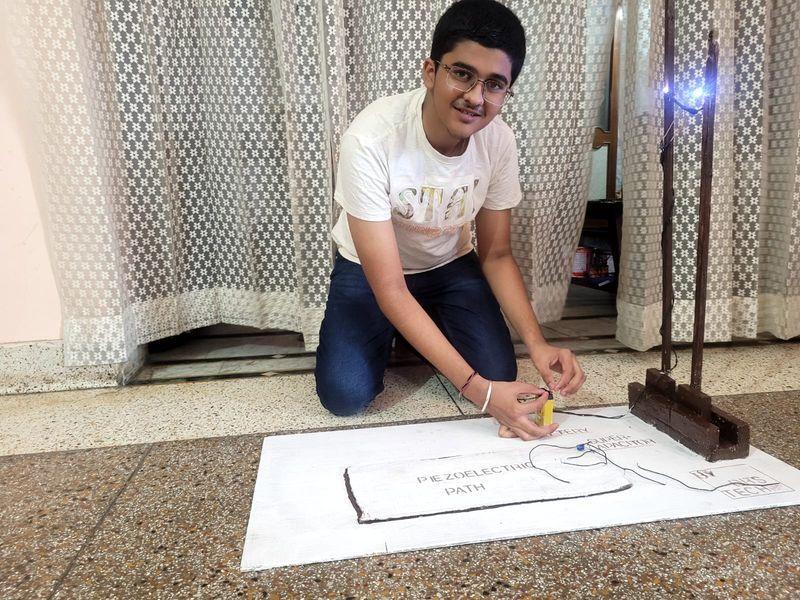
Hoshiarpur Student Builds Device to Generate Power from Footsteps
In a remarkable display of innovation and creativity, a Class 8 student from Hoshiarpur, Punjab, has developed a groundbreaking project that could revolutionize the way we think about power generation. Sanchit, the young prodigy, has designed a device that harnesses energy from a simple yet ubiquitous activity – walking. His project, “Power beneath our feet,” uses piezoelectric technology to convert footsteps into electricity, making it a potential game-changer in the field of renewable energy.
Piezoelectric technology is not new, but its application in power generation is still in its infancy. The concept is based on the principle that certain materials generate an electric charge when subjected to mechanical stress, such as pressure or vibration. In Sanchit’s case, the stress comes from the weight and movement of a person’s footsteps. The device, which resembles a small mat, is embedded with piezoelectric material that captures the energy generated by each step and converts it into electrical energy.
Sanchit’s project has already caught the attention of local officials, scientists, and enthusiasts, who are impressed by the sheer ingenuity and potential of his invention. The device, which can be used in various settings, including homes, offices, and public spaces, has the potential to reduce our reliance on traditional power sources and contribute to a more sustainable future.
“I was inspired by my science teacher, who taught us about piezoelectric technology,” Sanchit explained in an interview. “I thought, why not use this technology to generate power from something as common as walking? It’s a simple yet effective way to harness energy and make a positive impact on the environment.”
Sanchit’s device is still in its prototype stage, but it has shown promising results. According to the student, the device can generate up to 100 millivolts of electricity per minute, which is enough to power small devices such as smartphones, lamps, and watches. While the amount of energy generated may seem modest, it’s a significant step towards developing a sustainable and renewable power source.
The idea of generating power from footsteps may seem futuristic, but it’s not without its advantages. For one, it’s a clean and renewable source of energy that doesn’t produce any greenhouse gases or pollution. Additionally, it’s a decentralized power source that can be used in remote areas where traditional power infrastructure is limited or non-existent.
Sanchit’s project has also sparked interest among local authorities and scientists, who see its potential in addressing energy challenges in rural areas. “This project has the potential to revolutionize the way we think about power generation in our region,” said Dr. Sanjeev Kumar, a scientist at the Punjab University. “It’s a simple yet effective solution that can help reduce our reliance on traditional power sources and contribute to a more sustainable future.”
As Sanchit’s project continues to gain momentum, it’s likely to inspire others to think creatively about renewable energy sources. His invention serves as a reminder that innovation and entrepreneurship can come from anywhere, and that even the smallest idea can have a significant impact on our world.
In conclusion, Sanchit’s “Power beneath our feet” project is a remarkable achievement that showcases the potential of innovative thinking and creativity. As we continue to explore new and sustainable ways to generate power, projects like this one will play a crucial role in shaping our energy future.






